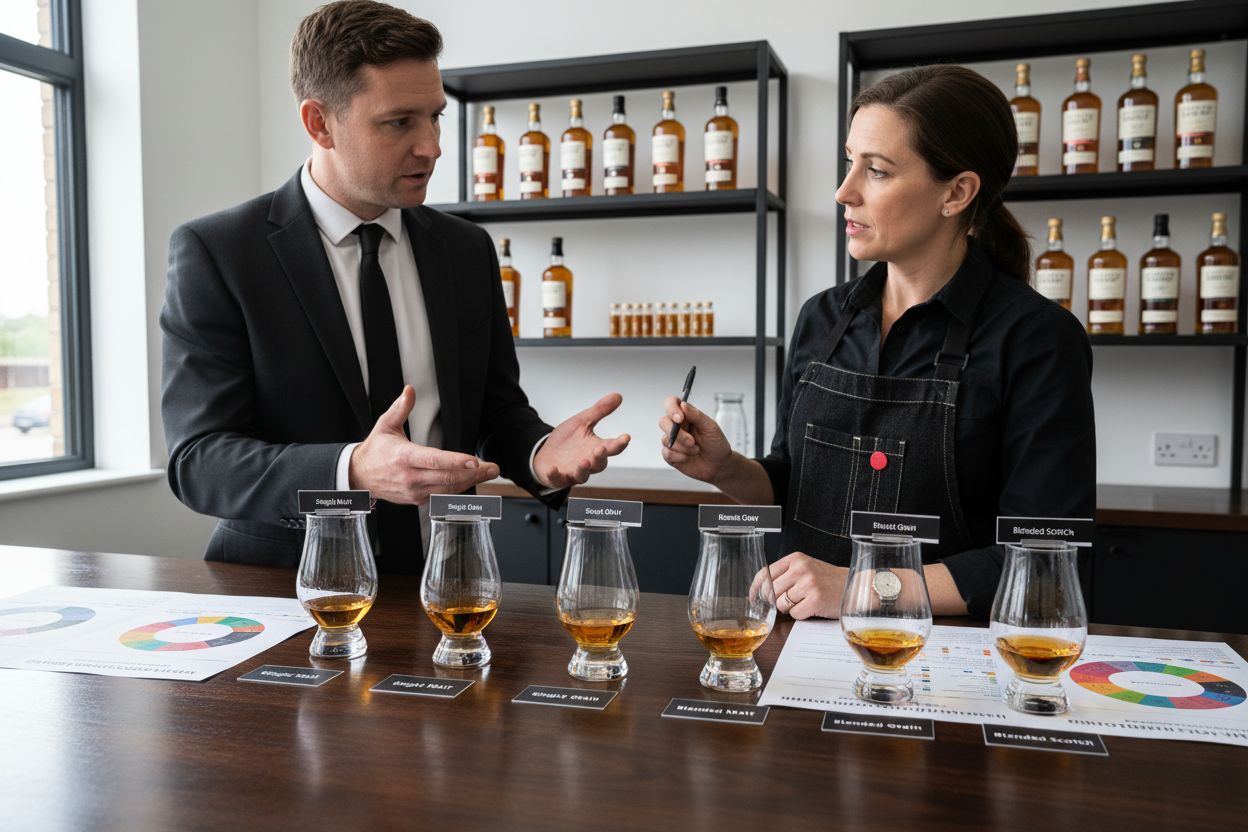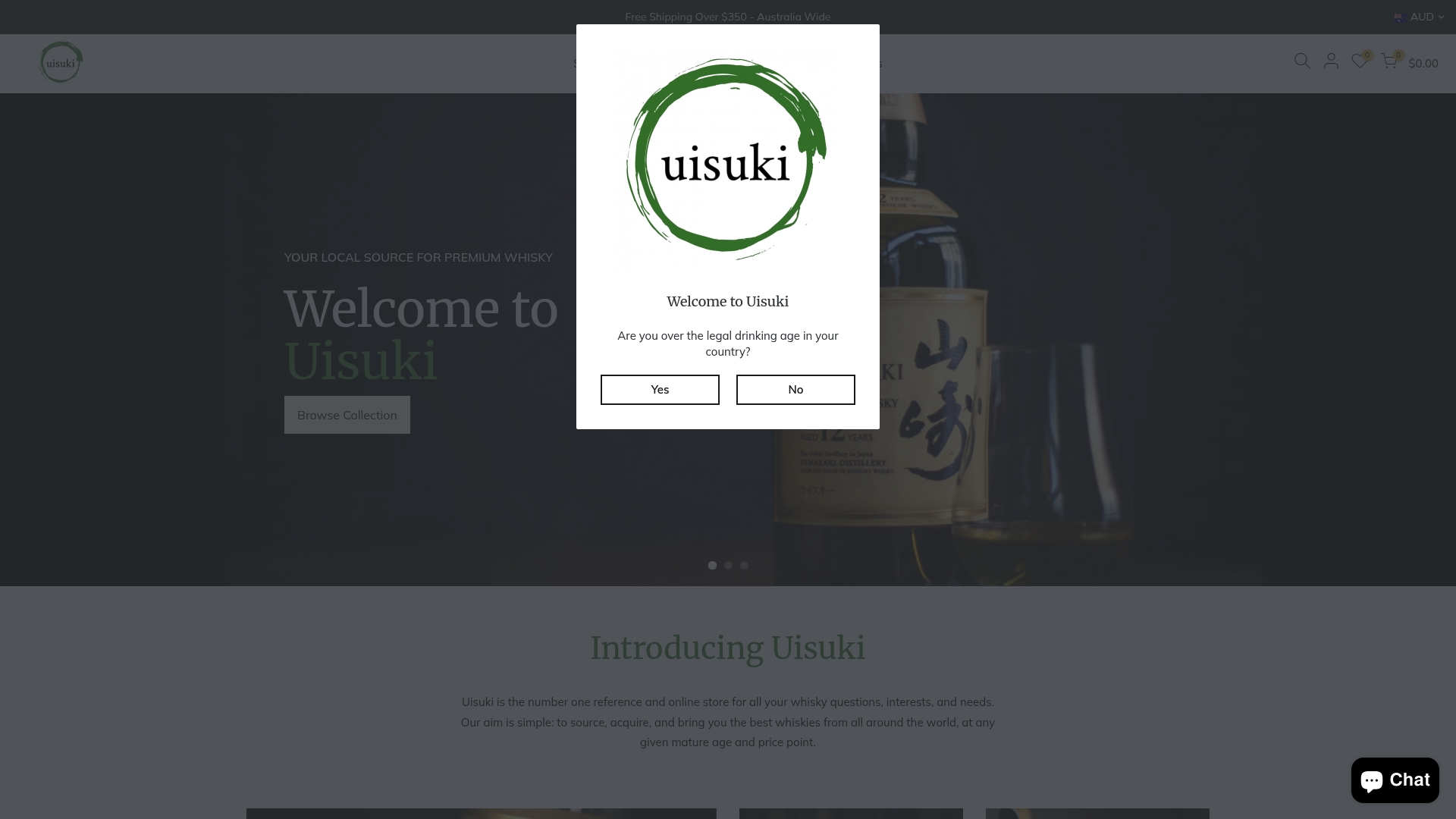Did you know that only about 1 percent of global whisky production qualifies as authentic Scotch whisky under strict legal rules? For whisky lovers and industry professionals alike, these standards protect not just flavor but a centuries-old Scottish heritage. Understanding the legal definitions behind Scotch whisky reveals why every bottle you see is the result of dedicated craftsmanship, careful regulation, and a global reputation that sets it apart from imitators.
Key Takeaways
| Point | Details |
|---|---|
| Legal Definition | Scotch Whisky must be produced in Scotland, using water and malted barley, and must adhere to strict distillation and maturation regulations. |
| Categories of Scotch | There are five distinct categories of Scotch whisky, each with unique production methods and ingredient requirements, ensuring authenticity and quality. |
| Maturation Rules | Scotch must be matured for at least three years in oak casks not exceeding 700 litres, with a minimum bottling strength of 40% ABV. |
| Geographical Protection | Scotch whisky has protected status, ensuring only spirits made in Scotland can use the name, with recent international recognition strengthening its authenticity. |
Table of Contents
- What Defines Scotch Whisky Legally
- Scotch Whisky Categories Explained
- Maturation, Strength & Production Rules
- Protected Regions and Geographical Indications
- Labeling, Marketing and Global Protection
What Defines Scotch Whisky Legally
Legal definitions matter. Especially in the world of premium spirits. Scotch Whisky isn’t just another drink - it’s a meticulously regulated product with strict requirements that protect its heritage and quality.
According to the Scotch Whisky Regulations 2009, authentic Scotch Whisky must meet several precise criteria:
- Distillation Location: Must be produced exclusively in Scotland
- Base Ingredients: Water and malted barley, with optional whole grains from other cereals
- Distillation Process: Mashed, fermented, and distilled at the same distillery
- Alcohol Content: Distilled below 94.8% alcohol by volume
-
Maturation:
- Only in Scotland
- In oak casks not exceeding 700 litres
- Minimum maturation period of three years
As confirmed by HMRC guidance, these regulations aren’t just suggestions - they’re legally binding requirements that cover manufacture, marketing, presentation, and movement of the spirit. Read more about whisky production details.
The regulations also stipulate additional quality standards: Scotch Whisky must retain its characteristic colour, aroma, and taste. No artificial additives are permitted, save for water or plain caramel colouring. The final product must be bottled at a minimum strength of 40% ABV, ensuring that every sip represents the authentic Scottish whisky tradition.
Scotch Whisky Categories Explained
Not all Scotch whiskies are created equal. The Scottish whisky world is wonderfully complex, with five distinct legal categories that each tell a unique story of craftsmanship and tradition.
According to the Scotch Whisky Association, these categories are legally defined and mutually exclusive:
-
Single Malt Scotch Whisky:
- Made exclusively from malted barley
- Distilled in pot stills
- Produced at a single distillery
-
Single Grain Scotch Whisky:
- Produced at a single distillery
- May include malted barley and other whole cereal grains
-
Blended Malt Scotch Whisky:
- Blend of single malt whiskies
- From different distilleries
-
Blended Grain Scotch Whisky:
- Blend of single grain whiskies
- From different distilleries
-
Blended Scotch Whisky:
- Combination of one or more single malt whiskies
- Combined with one or more single grain whiskies
Discover the nuanced world of Scotch whisky types and understand how each category represents a unique expression of Scotland’s rich distilling heritage. Each category must adhere to strict regulations: made from cereals, water, and yeast, distilled and matured in Scotland for at least three years, and bottled at a minimum of 40% ABV. These rules ensure that every drop maintains the exceptional quality synonymous with Scotch whisky.

Here’s a comparison of the five legal Scotch whisky categories:
| Category | Key Ingredients | Production Method | Distillery Requirement |
|---|---|---|---|
| Single Malt | 100% malted barley | Pot still | Single distillery |
| Single Grain | Barley Other cereals |
Any still | Single distillery |
| Blended Malt | Malted barley | Blend of malts | Multiple distilleries |
| Blended Grain | Barley Other cereals |
Blend of grains | Multiple distilleries |
| Blended Scotch | Malted barley Other cereals |
Blend of malts & grains | Multiple distilleries |
Maturation, Strength & Production Rules
The journey of Scotch whisky from distillery to bottle is a meticulously regulated art form. Production rules aren’t just bureaucratic checkboxes - they’re the guardians of a centuries-old tradition that ensures exceptional quality and authenticity.
According to Scottish legislation, Scotch whisky production follows rigorous standards:
- Distillation Limits: Must be distilled below 94.8% ABV to preserve complex flavour profiles
-
Maturation Requirements:
- Only in Scotland
- In oak casks not larger than 700 litres
- Minimum maturation period of three years
Interestingly, recent updates from the Scotch Whisky Association have expanded cask options. Distilleries can now mature or finish whisky in oak casks previously used for wine, beer, or spirits - with one crucial caveat. These casks must not have contained products made with stone fruits or any added flavourings, and must maintain the quintessential Scotch whisky character.
The final product must be bottled at a minimum of 40% ABV, with only two permissible additions: water and plain caramel colouring. These strict rules aren’t limitations - they’re a commitment to preserving the integrity, complexity, and rich heritage of Scotch whisky.
Explore the nuanced world of whisky maturation and appreciate the craftsmanship behind every carefully crafted bottle.
Protected Regions and Geographical Indications
Scotch whisky isn’t just a drink - it’s a protected national treasure with deep geographical roots. Geographical Indication status ensures that only spirits produced in Scotland following traditional methods can bear the prestigious Scotch whisky label.
The concept of protection goes beyond mere nomenclature. It’s a complex legal framework designed to preserve the authenticity and reputation of Scottish whisky worldwide. Each region of Scotland contributes unique characteristics to the whisky’s profile:
![]()
- Highlands: Known for diverse, complex flavour profiles
- Lowlands: Typically lighter, more delicate whiskies
- Speyside: Rich, fruity expressions
- Islay: Famous for peaty, smoky varieties
- Campbeltown: Once a whisky powerhouse, now a niche region
International recognition of these protections is gaining momentum. According to recent government reports, Argentina became the first country to grant comprehensive Geographical Indication protection for Scotch Whisky in 2025. This landmark decision helps combat counterfeiting and ensures that only whiskies meeting stringent Scottish production standards can use the Scotch whisky name in that market.
Discover the intricate world of regional whisky variations and appreciate how geographical boundaries aren’t just lines on a map - they’re living testament to centuries of distilling tradition and craftsmanship.
Labeling, Marketing and Global Protection
In the world of Scotch whisky, marketing and labeling are not just creative exercises - they’re legally regulated battlegrounds where authenticity and heritage are fiercely protected. The rules are crystal clear and uncompromising.
According to the 2009 Scotch Whisky Regulations, producers face strict guidelines:
-
Labeling Restrictions:
- Cannot mislead about whisky’s origin
- Distillery names only usable if whisky was wholly distilled there
- Regional references must be accurate
-
Marketing Prohibitions:
- No false representation of Scotch Whisky
- Prevent consumer confusion
- Protect the integrity of the product
The global protection strategy is increasingly sophisticated. In 2023, the Scotch Whisky Association secured a significant victory by obtaining a Certification Trademark for ‘Scotch Whisky’ in Hong Kong. This milestone means only whiskies made in Scotland and complying with traditional regulations can use the prestigious term.
Explore the intricate world of whisky authentication and understand how these protections aren’t just legal technicalities - they’re a passionate defense of a cultural legacy that spans generations.
Experience Authentic Scotch Whisky Backed by Real Expertise
You have just discovered how complex the legal definition of Scotch whisky is, and how choosing a genuine bottle is about much more than marketing claims. The strict rules around distillation, maturation, and geographical protection mean you deserve transparency and certainty in what you buy.

When you shop at Uisuki.com.au, you do not have to question the authenticity or provenance of your Scotch. Our curated selection spans single malts, blended whiskies, and rare finds, each with clear origins and ABV details compliant with the standards you have just read about. Explore our expert educational resources, or browse new arrivals you will not find elsewhere. If you want advice about the five Scotch categories or are ready to taste the real spirit of Scotland yourself, trust us to deliver only the real thing to your door. Head to Uisuki.com.au to claim your next authentic Scotch now before other collectors do.
Frequently Asked Questions
What is the legal definition of Scotch Whisky?
Scotch Whisky must be produced exclusively in Scotland using water and malted barley, distilled below 94.8% alcohol by volume, and matured in oak casks for a minimum of three years.
What are the different categories of Scotch Whisky?
The five legal categories are Single Malt, Single Grain, Blended Malt, Blended Grain, and Blended Scotch Whisky. Each category has specific production rules regarding ingredients and distillation.
What are the maturation requirements for Scotch Whisky?
Scotch Whisky must be matured in Scotland in oak casks not exceeding 700 litres for a minimum of three years. The final product must be bottled at a minimum strength of 40% ABV.
Can additives be used in Scotch Whisky?
No artificial additives are permitted in Scotch Whisky, except for water and plain caramel colouring to adjust colour, ensuring the spirit retains its authentic characteristics.

